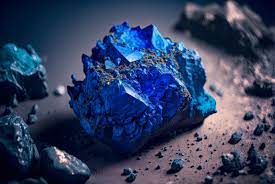Chinese mining companies have sharply increased their cobalt output in Congo as they seek to expand their market share, putting further pressure on a commodity whose price has badly tanked.
Cobalt is widely used in the electric vehicle sector whereby it’s combined with nickel to produce higher energy density in lithium-ion batteries. However, not all EV batteries use cobalt: several EV companies, including Tesla Inc. have shifted from Nickel Manganese Cobalt (NMC) to Lithium Iron Phosphate (LFP) batteries due partly to environmental and geopolitical concerns.
China is the world’s largest importer of cobalt, accounting for over 60% of global imports.
Unfortunately, surging supplies, mainly from the Democratic Republic of Congo and Indonesia, have forced prices down from $81,790/metric ton in April 2022 to $33,140/ metric ton. Indonesia is expected to quadruple cobalt production by 2033 and may even exceed those estimates, according to forecasts from Project Blue.
According to Reuters, China’s CMOC Group boosted its cobalt output by 144% during the first three quarters of 2023, keeping it on track to overtake giant commodity group Glencore as the world’s biggest cobalt producer. CMOC has set a target to grow its market share of the global mined cobalt market from 11% in 2022 to nearly 30% by 2025, Jorge Uzcategui of Benchmark Mineral Intelligence has told Reuters.
“Is CMOC trying to flood the cobalt market in an attempt to control a larger share of the market and oust the marginal producers, giving them more control over prices in the medium to long term? That is a possibility,” Uzcategui has posed.
CMOC’s Kisanfu mine in DRC is partially owned by China’s CATL, the world’s largest EV battery maker.
Meanwhile, China’s MMG Group plans to go ahead with the expansion at its Kinsevere mine in Congo, while Jinchuan Group International Resources is doing the same at its DRC cobalt output.
According to Morgan Stanley, global output of refined cobalt supply is expected to climb 23% in the current year, creating a surplus of 74,800 metric tons by 2024.
All that does not bode well for cobalt bulls:
“In the next five years or so, we think they’ll be oversupply in the market. So essentially that’s going to mean prices are going to remain low for the foreseeable future,” Thomas Matthews at CRU has predicted.
Goldman Sachs is also bearish, and has forecast softness for battery metals including cobalt, lithium and nickel:
“We expect further downside for cobalt prices in the near term as demand from the EV battery sector wanes while increasing global production keeps inventories healthy. Elsewhere, demand for cobalt in batteries within consumer electronics including laptops and phones will remain similarly grim in light of the global economic slowdown,” market analyst Fitch Solutions said in a report.
Oversupplied cobalt markets could receive some reprieve from China as it looks to take advantage of low prices to shore up its reserves. Earlier in the year, Bloomberg reported that China’s National Food and Strategic Reserves Administration plans to buy ~2,000 tons of cobalt, according to people familiar with the matter. However, that amount might be too little to move the needle with global production of refined cobalt currently in excess of 150,000 metric tons per annum.
But it’s not just cobalt markets that are deeply in the red. The epic commodity bull run that propelled dozens of commodities to multi-decade highs has finally come unstuck. From oil, gas and wheat to lithium, copper and iron ore, prices of the world’s leading commodities have pulled back sharply across the board.
The Bloomberg Commodities Index (BCOM) is a hefty barometer. This is the most widely used commodities market benchmark. In terms of physical commodities, it’s tracked by 23 exchange-traded contracts and more than $100 billion in assets. This benchmark has fallen 12% YTD and some 25% from its May 2022 peak. It’s now the benchmark bearing the bear market news.
“The drop in commodity prices seems to reflect the stuttering rebound of China, a looming US recession and supply side destruction in Europe. It’s indeed possible that inflation could turn into temporary disinflation,” Carsten Brzeski, global head of macro at ING, has told Bloomberg.
China is not just content to grow cobalt production in its DRC holdings. The country is also boosting domestic output, with the country’s share of cobalt production expected to reach half of global output, up from 44% currently. Chinese refining activity hit 140,000 tonnes in 2022, good for 77% global share of refining capacity.

 Iran Energy News Oil, Gas, Petrochemical and Energy Field Specialized Channel
Iran Energy News Oil, Gas, Petrochemical and Energy Field Specialized Channel



